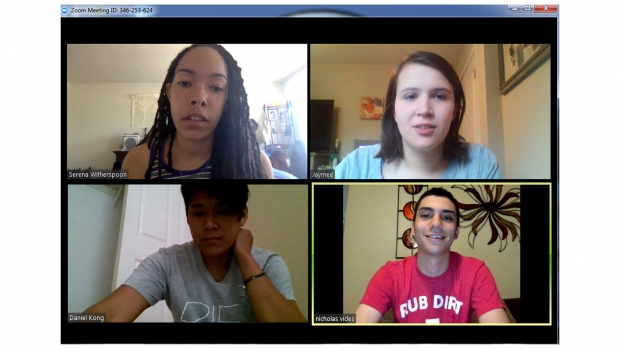Using Mismatch in the Classroom: A Teacher's Perspective

This Fall, AllSides for Schools will launch our newest service, Mismatch. Mismatch will be used to connect students who are different than they are across the country. They will have structured, civil conversations based around our Relationships First lesson plan.
At the end of last school year, we tested Mismatch in a few colleges and one high school. Here is an interview with one of the professors, Gina Baleria, that assigned her students the activity.
~~ Want to sign up for Mismatch? Email jaymee@allsides.com. ~~
1. What class(es) participated in Mismatch and how many students?
Journalism 1 & Journalism 2 (total of 52 students).
2. What was the best part of this experience for you as a teacher?
There were so many rewarding and amazing moments. One of my favorite outcomes was that many students genuinely felt that they had not been paired with someone all that different from them, even though they recognize that opinions differed on policy, major issues, and individual background. Through it all, it was the commonalities that resonated with my students. In addition, so many of them were actually excited to take part in this assignment/project. A couple even used it to write papers for other classes.
3. Could you tell what kind of effects these conversations had on your students?
In addition to seeing primarily the commonalities with their Mismatch, a couple students told me they planned to keep in touch with the Mismatch that they talked with. Many said that their Mismatch (paired with students from West Virginia) was no longer a stereotype to them, but an actual, nuanced person.
4. How would you like to use Mismatch in your classroom in the future?
Many of the courses I teach are connected to digital media, journalism, or communications. Mismatch works well in almost all of the courses I teach. For example, in my Digital Media Basics course, I teach a module on communicating in digital spaces and identifying audiences. Mismatch can be used here to help illustrate the importance of communicating with those who may be different from you.
5. What did your students tell you about their experience?
Overwhelmingly, my students found the experience valuable and said they were glad to have the opportunity to take part. Many said they’d like to do something like this again and that they wished other teachers did projects like this.
6. What kind of value do you see in teaching students about civil dialogue?
For me, teaching civil dialogue is critical to so many things we need to learn and understand to effectively function in and contribute to society. The great thing is, these skills can be woven in to all types of curriculum. For journalism, students need to check their biases when covering a story, so that they truly cover all sides and see angles they may otherwise miss. Learning to engage with their other can help them do this. In addition, it can help them cultivate sources that they might not otherwise know how to approach.
7. Would you recommend using Mismatch to other teachers?
Absolutely! It’s a transformative experience for students.
~~ Interested in trying Mismatch in your classroom? Email jaymee@allsides.com. ~~

May 7th, 2024

May 7th, 2024


May 6th, 2024